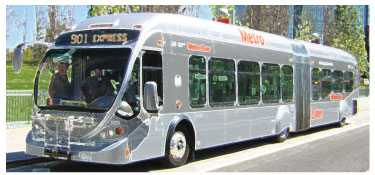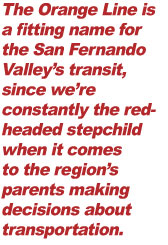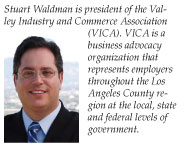By: Stuart Waldman

The Los Angeles County Metropolitan Transit Authority (Metro) recently released an updated map of public transit, which includes the projects that are in the pipeline in addition to the existing six rail lines and two bus ways.
The Westside and Downtown are a rainbow of future expansions on the Expo, Crenshaw, Purple and Gold lines. But the San Fernando Valley remains empty everywhere north and east of the overcrowded Orange Line, a bus way trying to handle double the intended capacity.
 The Orange Line is a fitting name for the San Fernando Valley’s transit, since we’re constantly the red-headed stepchild when it comes to the region’s parents making decisions about transportation. The Orange Line is a fitting name for the San Fernando Valley’s transit, since we’re constantly the red-headed stepchild when it comes to the region’s parents making decisions about transportation.
It’s not just Metro. On all level of policymaking, the Valley’s transportation needs take a backseat to everywhere else. As a result, the 1.2 million work-based trips taken in and out of the Valley every single day create ample congestion and frustration.
The Valley’s problems have accumulated to the point where the solutions require sweeping gestures – converting the Orange Line to light rail, accelerating the Sepulveda Pass Transit Corridor Project and renovating key sections of US Route 101 to relieve bottlenecks and increase roadway safety between the Valley and downtown Los Angeles (particularly interchanges with the I-405, SR-170 and SR-134).
These problems could have been prevented earlier, had the Orange Line been built as rail in the first place or had the Valley received funding proportional to our population in the past – but now we’re looking at timelines of 2030 and 2040 for these crucial projects, and some, like a light rail, now rely on the repeal of restrictive state legislation. received funding proportional to our population in the past – but now we’re looking at timelines of 2030 and 2040 for these crucial projects, and some, like a light rail, now rely on the repeal of restrictive state legislation.
And the cycle begins again. Metro is studying the possibilities of either a bus line or a light rail for the East San Fernando Valley Corridor that will mostly run down Van Nuys Boulevard. If we settle on a bus line because of unwillingness to allocate proper funding for a light rail, we’ll be in the same boat in 20 years as we are with the Orange Line now.
Other projects in the county, like expanding the Crenshaw Line, have been accelerated by funds that are now not available to the Valley and other overlooked areas.
We have a dedicated organization that guides our transportation needs – the San Fernando Valley Council of Governments. The Valley Industry and Commerce Association (VICA) hopes that the upcoming leadership changes in the SFVCOG will help refocus the organization and create an actual voice for leaders who are dedicated to improving this region’s transportation climate. The SFVCOG has the potential to actually shift the region’s focus so that the Valley’s needs are better represented.
The Valley comprises two-fifths of the city’s population and almost one-fifth of the county’s population, yet we are getting a much smaller piece of the transportation pie. The best approach to improving the transportation environment in this region is greater and more efficient connectivity in the Valley to the rest of the area.


|